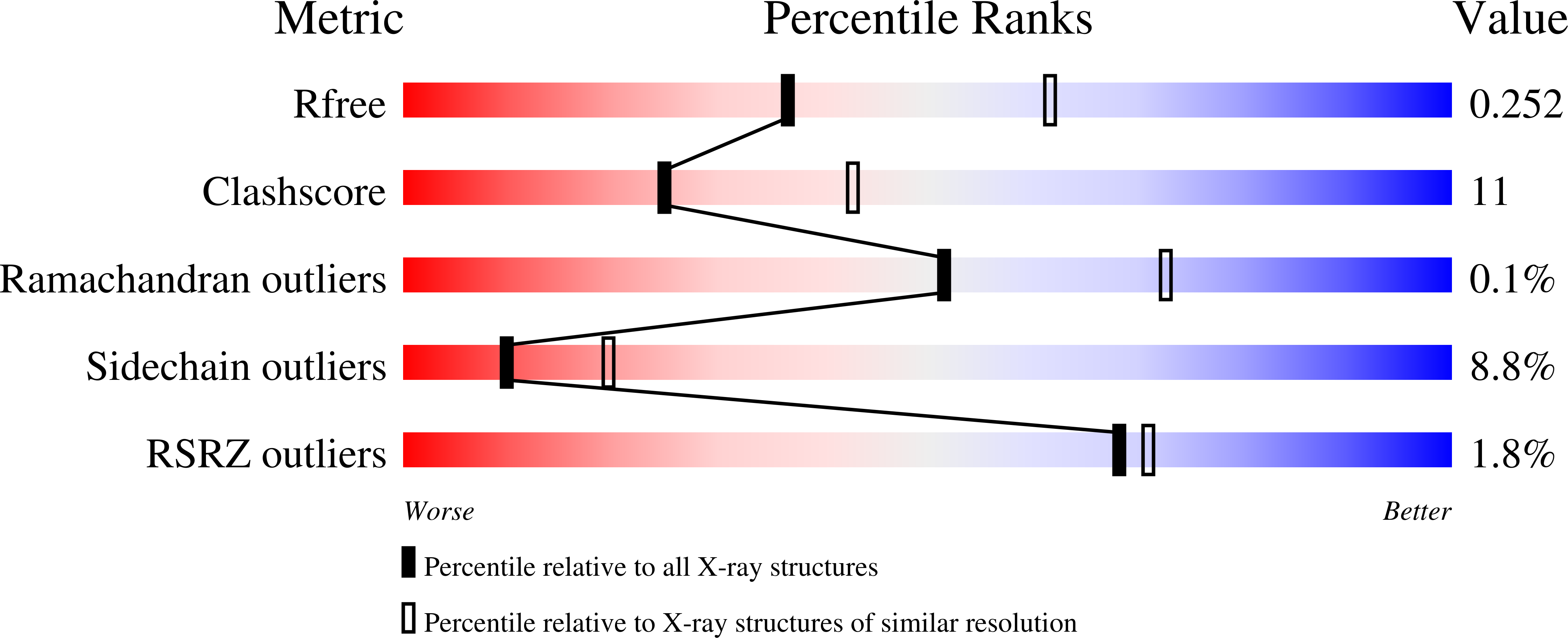Structure of Mre11-Nbs1 complex yields insights into ataxia-telangiectasia-like disease mutations and DNA damage signaling.
Schiller, C.B., Lammens, K., Guerini, I., Coordes, B., Feldmann, H., Schlauderer, F., Mockel, C., Schele, A., Strasser, K., Jackson, S.P., Hopfner, K.P.(2012) Nat Struct Mol Biol 19: 693-700
- PubMed: 22705791
- DOI: https://doi.org/10.1038/nsmb.2323
- Primary Citation of Related Structures:
4FBK, 4FBQ, 4FBW, 4FCX - PubMed Abstract:
The Mre11-Rad50-Nbs1 (MRN) complex tethers, processes and signals DNA double-strand breaks, promoting genomic stability. To understand the functional architecture of MRN, we determined the crystal structures of the Schizosaccharomyces pombe Mre11 dimeric catalytic domain alone and in complex with a fragment of Nbs1. Two Nbs1 subunits stretch around the outside of the nuclease domains of Mre11, with one subunit additionally bridging and locking the Mre11 dimer via a highly conserved asymmetrical binding motif. Our results show that Mre11 forms a flexible dimer and suggest that Nbs1 not only is a checkpoint adaptor but also functionally influences Mre11-Rad50. Clinical mutations in Mre11 are located along the Nbs1-interaction sites and weaken the Mre11-Nbs1 interaction. However, they differentially affect DNA repair and telomere maintenance in Saccharomyces cerevisiae, potentially providing insight into their different human disease pathologies.
Organizational Affiliation:
Gene Center, Ludwig Maximilians University Munich, Munich, Germany.



















